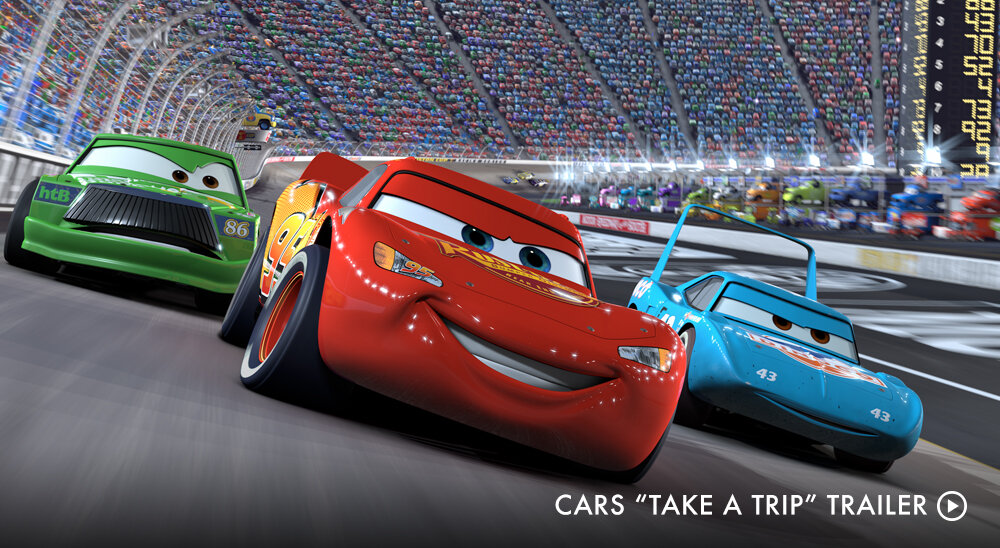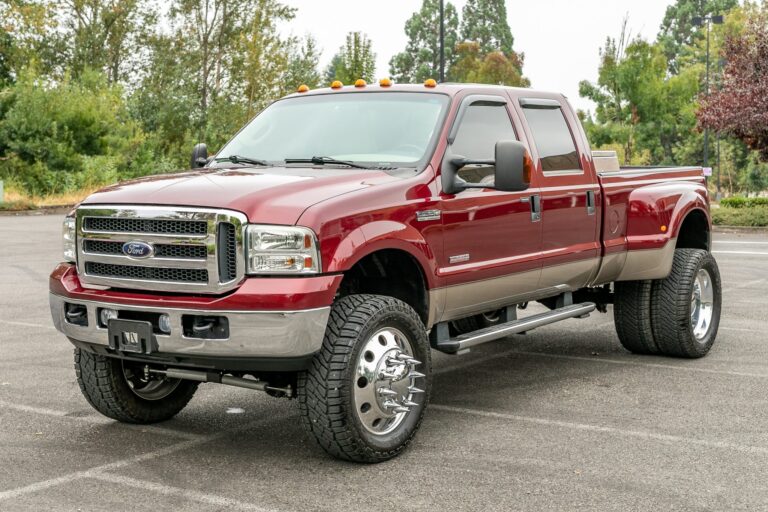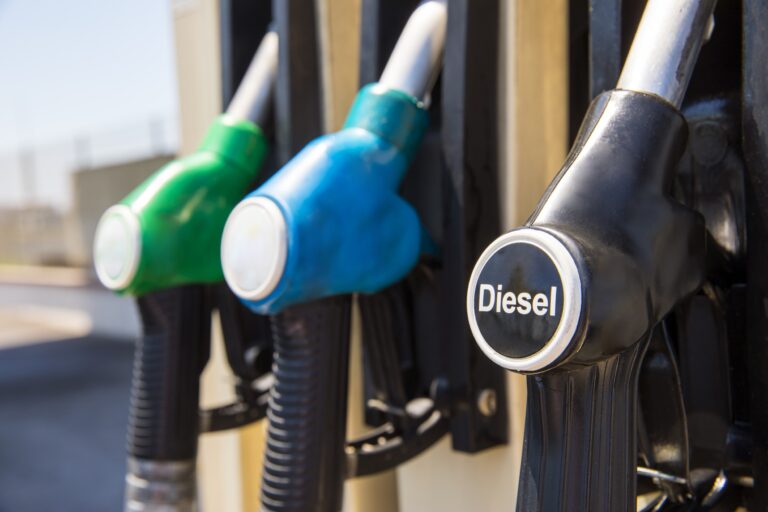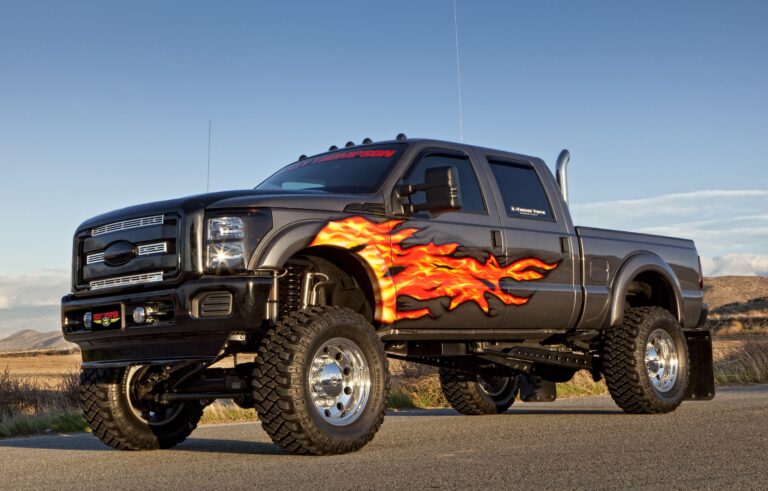Car Brand Repair Costs: A Comprehensive Guide to Understanding and Managing Your Automotive Expenses
Car Brand Repair Costs: A Comprehensive Guide to Understanding and Managing Your Automotive Expenses cars.truckstrend.com
Owning a car is a significant investment, and while the initial purchase price often dominates our attention, the ongoing costs of ownership can be just as impactful on our wallets. Among these, car brand repair costs stand out as a particularly variable and often unpredictable expense. Far from being a uniform figure, the cost of keeping a vehicle running can differ dramatically depending on its make, model, age, and even the specific technologies it incorporates. Understanding these nuances is crucial for prospective buyers and current owners alike, enabling more accurate financial planning, smarter purchasing decisions, and proactive maintenance strategies.
This comprehensive guide delves into the intricate world of car brand repair costs, exploring the factors that influence them, dissecting common repair categories, and offering actionable insights to help you mitigate these expenses. By the end, you’ll be equipped with the knowledge to navigate the automotive repair landscape with greater confidence and control over your budget.
Car Brand Repair Costs: A Comprehensive Guide to Understanding and Managing Your Automotive Expenses
What Influences Car Brand Repair Costs?
The variation in repair costs across different car brands is not arbitrary; it’s a complex interplay of several underlying factors. Grasping these influences is the first step toward understanding why some brands consistently rank higher or lower on the repair cost spectrum.
1. Brand Reputation and Engineering Philosophy
At a fundamental level, the manufacturer’s approach to engineering and its market positioning significantly impact repair costs.
- Luxury vs. Economy: Premium brands (e.g., BMW, Mercedes-Benz, Audi, Porsche) often employ more sophisticated, high-performance components and advanced technologies. While this translates to a superior driving experience, it also means specialized parts, complex diagnostics, and highly skilled labor are required for repairs, leading to higher costs.
- Reliability Focus: Brands like Toyota and Honda have built their reputation on robust, durable engineering and a focus on long-term reliability. Their designs often prioritize ease of maintenance and the use of widely available, less expensive parts, resulting in lower average repair costs.

2. Parts Availability and Cost
The cost of replacement parts is a major determinant of overall repair expenses.
- Original Equipment Manufacturer (OEM) Parts: These are parts made by or for the car’s original manufacturer. They guarantee fit and performance but are often the most expensive.
- Aftermarket Parts: Produced by third-party companies, aftermarket parts can be significantly cheaper than OEM parts. Their quality can vary, but reputable aftermarket suppliers offer excellent value. Brands with high demand and simpler designs tend to have a wider, more competitive aftermarket parts supply.
- Proprietary Technology: Some brands, particularly luxury and high-tech ones, use proprietary components that are only available directly from the manufacturer, limiting competition and driving up prices. Global supply chain issues can also impact parts availability and cost for all brands.

3. Labor Rates
The cost of labor varies based on several factors:
- Geographic Location: Labor rates are typically higher in urban areas and regions with a higher cost of living.
- Mechanic Specialization: Highly specialized repairs (e.g., complex electronics, hybrid systems, performance engines) often require technicians with specific training and tools, commanding higher hourly rates. Dealerships, while offering brand-specific expertise, generally have higher labor rates than independent repair shops.
- Diagnostic Time: Modern vehicles require extensive diagnostic procedures, which can add significant labor time even before a repair begins.
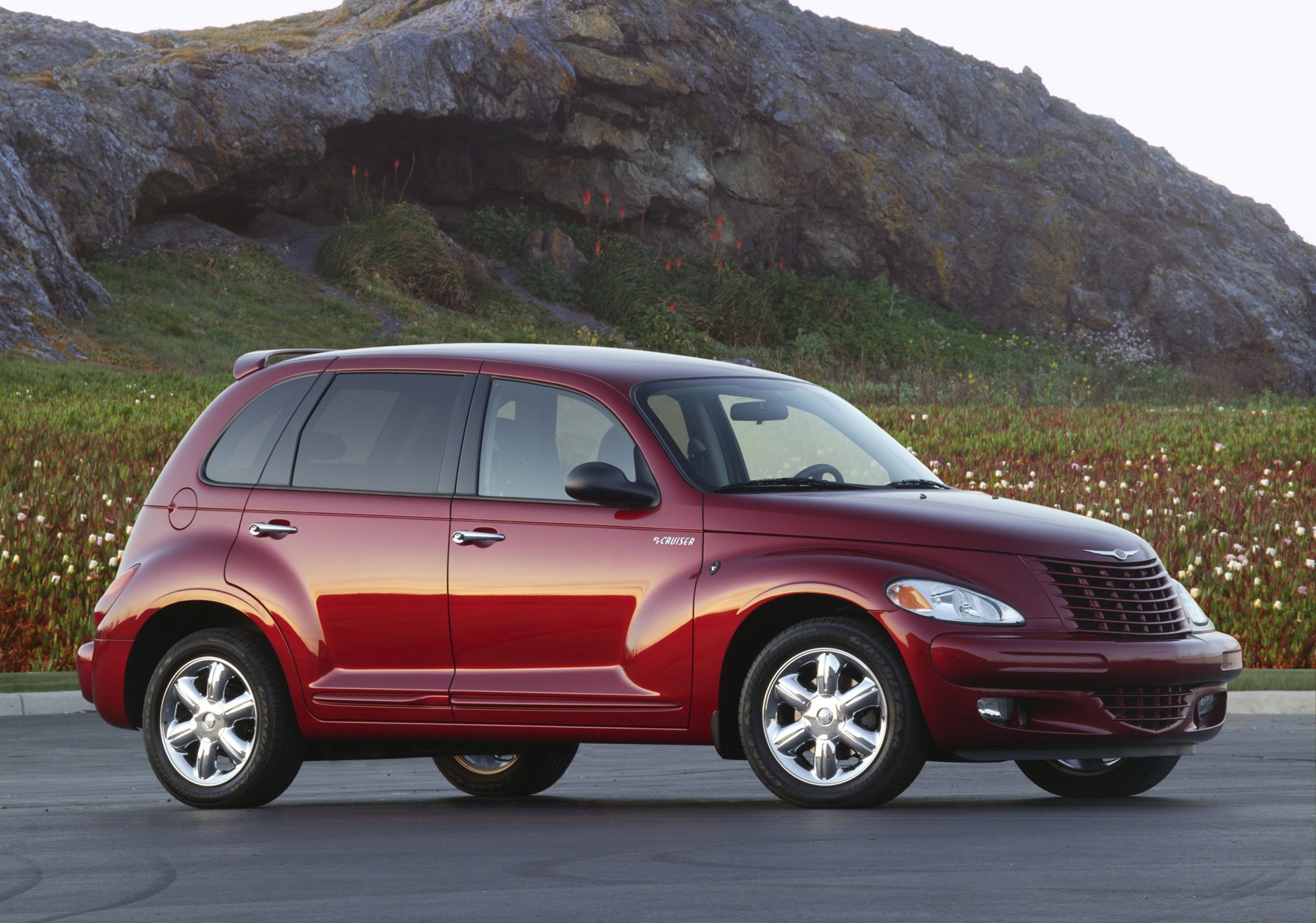
4. Vehicle Age and Mileage
As a vehicle ages and accumulates mileage, the likelihood of components wearing out or failing increases. Major repairs often become necessary as a car crosses key mileage thresholds (e.g., 60,000, 100,000, 150,000 miles), when components like transmissions, engine gaskets, or suspension systems may require replacement.
5. Technology and Complexity
The increasing sophistication of modern vehicles, with their myriad sensors, electronic control units (ECUs), infotainment systems, and advanced driver-assistance systems (ADAS), introduces new avenues for potential failures. While these technologies enhance safety and convenience, diagnosing and repairing them often requires specialized diagnostic equipment and highly trained technicians, leading to higher costs. This is particularly true for electric and hybrid vehicles, where high-voltage battery systems and unique drivetrain components necessitate specialized expertise.
Decoding Repair Cost Categories
To better understand where your money goes, it’s helpful to categorize typical car repairs:
- Routine Maintenance: These are scheduled services like oil changes, tire rotations, fluid checks, and filter replacements. While essential for preventing larger issues, their cost can vary based on the type of oil required, filter complexity, and specific brand recommendations.
- Wear and Tear Repairs: These include components that naturally degrade over time and use, such as brake pads and rotors, tires, suspension components (shocks, struts), belts, hoses, and spark plugs. Their replacement frequency and cost depend on driving habits, road conditions, and the quality of the original parts.
- Major System Failures: These are the most financially impactful repairs, involving core components like the engine, transmission, hybrid battery, or major electronic control modules. Such failures are often unpredictable and can cost thousands of dollars.
- Electronic/Diagnostic Repairs: With the rise of vehicle electronics, issues with sensors, wiring harnesses, infotainment systems, or central ECUs are becoming more common. Diagnosing these problems can be time-consuming and expensive, even if the part replacement itself is relatively simple.
- Recalls & Warranty Repairs: It’s important to note that repairs covered by manufacturer recalls (safety-related issues) or under the vehicle’s warranty (defects in materials or workmanship) are typically performed at no cost to the owner, significantly reducing out-of-pocket expenses.
Strategies to Mitigate Car Repair Costs
While some repair costs are unavoidable, there are numerous proactive steps you can take to keep your expenses in check:
- Research Before Buying: Before purchasing, research the long-term reliability and average repair costs of potential vehicles. Consult reputable sources like Consumer Reports, J.D. Power, RepairPal, and YourMechanic for data on total cost of ownership (TCO) and brand-specific repair trends.
- Adhere to the Maintenance Schedule: Preventative maintenance is almost always cheaper than reactive repairs. Follow your car’s recommended service schedule meticulously. Regular oil changes, fluid checks, and timely part replacements can prevent minor issues from escalating into major, costly failures.
- Choose a Reputable Mechanic: While dealership service centers offer brand-specific expertise and genuine OEM parts, independent shops often provide competitive pricing and personalized service. Seek out mechanics with certifications (e.g., ASE certified) and positive customer reviews. Get multiple quotes for significant repairs.
- Consider Aftermarket Parts (Wisely): For non-critical components (e.g., lights, exterior trim, certain suspension parts), high-quality aftermarket parts can offer significant savings without compromising safety or performance. Always consult your mechanic about the suitability of aftermarket options.
- DIY Minor Repairs: If you have the mechanical aptitude and proper tools, performing simple tasks like changing air filters, wiper blades, or even brake pads can save on labor costs. However, know your limits and never attempt repairs that could compromise safety or damage complex systems.
- Build an Emergency Fund: Unexpected car repairs are a common financial stressor. Set aside a dedicated emergency fund specifically for automotive expenses to avoid going into debt when a major repair arises.
- Evaluate Extended Warranties: While not for everyone, an extended warranty or vehicle service contract can provide peace of mind and protect against major repair costs, especially for complex or high-tech vehicles. Carefully read the terms, coverage limits, and exclusions to determine if it’s a worthwhile investment for your specific vehicle and driving habits.
- Practice Good Driving Habits: Aggressive driving, sudden braking, and rapid acceleration put undue stress on your vehicle’s components, leading to faster wear and tear. Gentle driving habits can significantly extend the life of your brakes, tires, and powertrain.
Brand-Specific Trends and Examples
While specific costs vary, general trends exist across different automotive brands:
- Japanese Brands (Toyota, Honda, Subaru, Mazda, Nissan): Generally renowned for reliability and lower average repair costs. Parts are widely available and often reasonably priced. Common issues tend to be less severe and less frequent.
- Korean Brands (Hyundai, Kia): Have made significant strides in reliability and offer competitive long warranties. Repair costs are typically moderate, with improving parts availability.
- American Brands (Ford, Chevrolet, Ram, Jeep): Tend to have moderate repair costs. Parts are usually readily available due to a large domestic market. Some models might have known common issues specific to their design.
- German Luxury Brands (BMW, Mercedes-Benz, Audi, Porsche): Consistently rank among the highest for repair costs. This is due to complex engineering, specialized proprietary parts, advanced electronics, and higher labor rates required for specialized diagnostics and repairs. Routine maintenance can also be more expensive.
- Other European Brands (Volkswagen, Volvo, Land Rover): Can be a mixed bag. Volkswagen often sits in the mid-to-high range, similar to its German luxury counterparts but sometimes with more accessible parts. Volvo is known for safety and unique engineering, which can lead to higher repair costs, while Land Rover/Range Rover are often associated with significant repair expenses due to complexity and specific issues.
- Electric Vehicles (EVs) & Hybrids: While traditional maintenance costs (oil changes, spark plugs) are reduced or eliminated, they introduce new potential high-cost items like battery replacement (though often warrantied for long periods) and specialized diagnostics for their unique electrical systems. Early data suggests overall maintenance can be lower, but unexpected high-voltage component failures can be very expensive.
Estimated Average Annual Car Brand Repair Costs
It’s crucial to understand that these figures are averages and estimates. Actual repair costs will vary significantly based on vehicle age, mileage, specific model, regional labor rates, and the nature of the repair. This table provides a general overview based on data from various automotive reliability and cost surveys (e.g., RepairPal, YourMechanic, Consumer Reports data).
| Car Brand Category | Examples | Estimated Average Annual Repair Cost Range | Common Cost Drivers / Notes |
| :—————– | :——- | :—————————————- | :—————————————————————————————————————————————————————————————————————————————————————————————————————————————————————————————————————————————————————————————————————————————————————————————————————————————————————————————————————————————————————————————————————————————————————————————————————————————————————————————————————————————————————————————————————————————————————————————————————————————————————————————————————————————————————————————————————————————————————————————————————————————————————————————————————————————————————————————————————————————————————————————————————————————————————————————————————————————————————————————————————————————————————————————————————————————————————————————————————————————————————————————————————————————————————————————————————————————————————————————————————————————————————————————————————————————————————————————————————————————————————————————————————————————————————————————————————————————————————————————————————————————————————————————————————————————————————————————————————————————————————————————————————————————————————————————————————————————————————————————————————————————————————————————————————————————————————————————————————————————————————————————————————————————————————————————————————————————————————————————————————————————————————————————————————————————————————————————————————————————————————————————————————————————————————————————————————————————————————————————————————————————————————————————————————————————————————————————————————————————————————————————————————————————————————————————————————————————————————————————————————————————————————————————————————————————————————————————————————————————————————————————————————————————————————————————————————————————————————————————————————————————————————————————————————————————————————————————————————————————————————————————————————————————————————————————————————————————————————————————————————————————————————————————————————————————————————————————————————————————————————————————————————————————————————————————————————————————————————————————————————————————————————————————————————————————————————————————————————————————————————————————————————————————————————————————————————————————————————————————————————————————————————————————————————————————————————————————————————————————————————————————————————————————————————————————————————————————————————————————————————————————————————————————————————————————————————————————————————————————————————————————————————————————————————————————————————————————————————————————————————————————————————————————————————————————————————————————————————————————————————————————————————————————————————————————————————————————————————————————————————————————————————————————————————————————————————————————————————————————————————————————————————————————————————————————————————————————————————————————————————————————————————————————————————————————————————————————————————————————————————————————————————————————————————————————————————————————————————————————————————————————————————————————————————————————————————————————————————————————————————————————————————————————————————————————————————————————————————————————————————————————————————————————————————————————————————————————————————————————————————————————————————————————————————————————————————————————————————————————————————————————————————————————————————————————————————————————————————————————————————————————————————————————————————————————————————————————————————————————————————————————————————————————————————————————————————————————————————————————————————————————————————————————————————————————————————————————————————————————————————————————————————————————————————————————————————————————————————————————————————————————————————————————————————————————————————————————————————————————————————————————————————————————————————————————————————————————————————————————————————————————————————————————————————————————————————————————————————————————————————————————————————————————————————————————————————————————————————————————————————————————————————————————————————————————————————————————————————————————————————————————————————————————————————————————————————————————————————————————————————————————————————————————————————————————————————————————————————————————————————————————————————————————————————————————————————————————————————————————————————————————————————————————————————————————————————————————————————————————————————————————————————————————————————————————————————————————————————————————————————————————————————————————————————————————————————————————————————————————————————————————————————————————————————————————————————————————————————————————————————————————————————————————————————————————————————————————————————————————————————————————————————————————————————————————————————————————————————————————————————————————————————————————————————————————————————————————————————————————————————————————————————————————————————————————————————————————————————————————————————————————————————————————————————————————————————————————————————————————————————————————————————————————————————————————————————————————————————————————————————————————————————————————————————————————————————————————————————————————————————————————————————————————————————————————————————————————————————————————————————————————————————————————————————————————————————————————————————————————————————————————————————————————————————————————————————————————————————————————————————————————————————————————————————————————————————————————————————————————————————————————————————————————————————————————————————————————————————————————————————————————————————————————————————————————————————————————————————————————————————————————————————————————————————————————————————————————————————————————————————————————————————————————————————————————————————————————————————————————————————————————————————————————————————————————————————————————————————————————————————————————————————————————————————————————————————————————————————————————————————————————————————————————————————————————————————————————————————————————————————————————————————————————————————————————————————————————————————————————————————————————————————————————————————————————————————————————————————————————————————————————————————————————————————————————————————————————————————————————————————————————————————————————————————————————————————————————————————————————————————————————————————————————————————————————————————————————————————————————————————————————————————————————————————————————————————————————————————————————————————————————————————————————————————————————————————————————————————————————————————————————————————————————————————————————————————————————————————————————————————————————————————————————————————————————————————————————————————————————————————————————————————————————————————————————————————————————————————————————————————————————————————————————————————————————————————————————————————————————————————————————————————————————————————————————————————————————————————————————————————————————————————————————————————————————————————————————————————————————————————————————————————————————————————————————————————————————————————————————————————————————————————————————————————————————————————————————————————————————————————————————————————————————————————————————————————————————————————————————————————————————————————————————————————————————————————————————————————————————————————————————————————————————————————————————————————————————————————————————————————————————————————————————————————————————————————————————————————————————————————————————————————————————————————————————————————————————————————————————————————————————————————————————————————————————————————————————————————————————————————————————————————————————————————————————————————————————————————————————————————————————————————————————————————————————————————————————————————————————————————————————————————————————————————————————————————————————————————————————————————————————————————————————————————————————————————————————————————————————————————————————————————————————————————————————————————————————————————————————————————————————————————————————————————————————————————————————————————————————————————————————————————————————————————————————————————————————————————————————————————————————————————————————————————————————————————————————————————————————————————————————————————————————————————————————————————————————————————————————————————————————————————————————————————————————————————————————————————————————————————————————————————————————————————————————————————————————————————————————————————————————————————————————————————————————————————————————————————————————————————————————————————————————————————————————————————————————————————————————————————————————————————————————————————————————————————————————————————————————————————————————————————————————————————————————————————————————————————————————————————————————————————————————————————————————————————————————————————————————————————————————————————————————————————————————————————————————————————————————————————————————————————————————————————————————————————————————————————————————————————————————————————————————————————————————————————————————————————————————————————————————————————————————————————————————————————————————————————————————————————————————————————————————————————————————————————————————————————————————————————————————————————————————————————————————————————————————————————————————————————————————————————————————————————————————————————————————————————————————————————————————————————————————————————————————————————————————————————————————————————————————————————————————————————————————————————————————————————————————————————————————————————————————————————————————————————————————————————————————————————————————————————————————————————————————————————————————————————————————————————————————————————————————————————————————————————————————————————————————————————————————————————————————————————————————————————————————————————————————————————————————————————————————————————————————————————————————————————————————————————————————————————————————————————————————————————————————————————————————————————————————————————————————————————————————————————————————————————————————————————————————————————————————————————————————————————————————————————————————————————————————————————————————————————————————————————————————————————————————————————————————————————————————————————————————————————————————————————————————————————————————————————————————————————————————————————————————————————————————————————————————————————————————————————————————————————————————————————————————————————————————————————————————————————————————————————————————————————————————————————————————————————————————————————————————————————————————————————————————————————————————————————————————————————————————————————————————————————————————————————————————————————————————————————————————————————————————————————————————————————————————————————————————————————————————————————————————————————————————————————————————————————————————————————————————————————————————————————————————————————————————————————————————————————————————————————————————————————————————————————————————————————————————————————————————————————————————————————————————————————————————————————————————————————————————————————————————————————————————————————————————————————————————————————————————————————————————————————————————————————————————————————————————————————————————————————————————————————————————————————————————————————————————————————————————————————————————————————————————————————————————————————————————————————————————————————————————————————————————————————————————————————————————————————————————————————————————————————————————————————————————————————————————————————————————————————————————————————————————————————————————————————————————————————————————————————————————————————————————————————————————————————————————————————————————————————————————————————————————————————————————————————————————————————————————————————————————————————————————————————————————————————————————————————————————————————————————————————————————————————————————————————————————————————————————————————————————————————————————————————————————————————————————————————————————————————————————————————————————————————————————————————————————————————————————————————————————————————————————————————————————————————————————————————————————————————————————————————————————————————————————————————————————————————————————————————————————————————————————————————————————————————————————————————————————————————————————————————————————————————————————————————————————————————————————————————————————————————————————————————————————————————————————————————————————————————————————————————————————————————————————————————————————————————————————————————————————————————————————————————————————————————————————————————————————————————————————————————————————————————————————————————————————————————————————————————————————————————————————————————————————————————————————————————————————————————————————————————————————————————————————————————————————————————————————————————————————————————————————————————————————————————————————————————————————————————————————————————————————————————————————————————————————————————————————————————————————————————————————————————————————————————————————————————————————————————————————————————————————————————————————————————————————————————————————————————————————————————————————————————————————————————————————————————————————————————————————————————————————————————————————————————————————————————————————————————————————————————————————————————————————————————————————————————————————————————————————————————————————————————————————————————————————————————————————————————————————————————————————————————————————————————————————————————————————————————————————————————————————————————————————————————————————————————————————————————————————————————————————————————————————————————————————————————————————————————————————————————————————————————————————————————————————————————————————————————————————————————————————————————————————————————————————————————————————————————————————————————————————————————————————————————————————————————————————————————————————————————————————————————————————————————————————————————————————————————————————————————————————————————————————————————————————————————————————————————————————————————————————————————————————————————————————————————————————————————————————————————————————————————————————————————————————————————————————————————————————————————————————————————————————————————————————————————————————————————————————————————————————————————————————————————————————————————————————————————————————————————————————————————————————————————————————————————————————————————————————————————————————————————————————————————————————————————————————————————————————————————————————————————————————————————————————————————————————————————————————————————————————————————————————————————————————————————————————————————————————————————————————————————————————————————————————————————————————————————————————————————————————————————————————————————————————————————————————————————————————————————————————————————————————————————————————————————————————————————————————————————————————————————————————————————————————————————————————————————————————————————————————————————————————————————————————————————————————————————————————————————————————————————————————————————————————————————————————————————————————————————————————————————-, which can run into thousands.
Conclusion: Driving Home the Financial Reality
Car brand repair costs are a multifaceted aspect of vehicle ownership, capable of significantly impacting your overall financial health. From the choice of brand and model to your diligence in maintenance and selection of repair services, every decision plays a role in determining your expenditure. By thoroughly researching potential purchases, adhering to regular maintenance schedules, being judicious about where and how repairs are conducted, and maintaining a prudent emergency fund, car owners can exert considerable control over these costs. Understanding this often-overlooked dimension of car ownership transforms it from a source of unexpected financial strain into a manageable and predictable element of your personal budget, paving the way for a more confident and sustainable automotive experience.
Frequently Asked Questions (FAQ)
Q1: Which car brands generally have the lowest repair costs?
A1: Brands like Toyota, Honda, and Subaru consistently rank among those with the lowest average annual repair costs due to their reputation for reliability, readily available parts, and straightforward engineering.
Q2: Are luxury cars always more expensive to repair?
A2: Generally, yes. Luxury brands (e.g., BMW, Mercedes-Benz, Audi, Porsche) tend to have significantly higher repair costs due to more complex engineering, specialized and proprietary parts, advanced technologies requiring specific diagnostic tools, and higher labor rates at specialized service centers.
Q3: Does vehicle age significantly impact repair costs?
A3: Absolutely. As a vehicle ages and accumulates mileage, parts naturally wear out, and the likelihood of major component failures increases. Repair costs tend to rise significantly after a vehicle passes certain mileage thresholds (e.g., 60,000, 100,000 miles) and its original factory warranty expires.
Q4: Should I buy an extended warranty?
A4: An extended warranty (or vehicle service contract) can be a good investment for some, especially for complex or potentially high-repair-cost vehicles (like certain luxury cars or models known for specific issues). However, it’s crucial to read the fine print, understand what’s covered/excluded, and compare the cost of the warranty against potential repair savings. For highly reliable brands, it may not always be cost-effective.
Q5: How can I find a reliable mechanic that won’t overcharge me?
A5: Look for mechanics with ASE (Automotive Service Excellence) certifications, read online reviews (Google, Yelp, etc.), ask for recommendations from trusted friends or family, and get multiple written quotes for significant repairs. Don’t be afraid to ask questions about the repair process and parts used.
Q6: Are electric vehicles (EVs) cheaper to repair than gasoline cars?
A6: In terms of routine maintenance, EVs often have lower costs as they don’t require oil changes, spark plug replacements, or fuel filter changes. However, potential high-cost repairs could involve the battery pack (though often covered by long warranties) or specialized electrical components. Overall, data suggests lower maintenance costs, but repair costs for major EV-specific components can be high if not covered by warranty.
